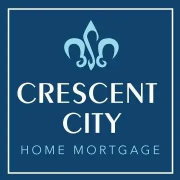

Many homebuyers do not have the standard or consistent forms of income that are typically required by mortgage lenders. This does not mean they are unable to qualify for conventional loans. This buyer may still have enough income or assets to afford homeownership. In these situations, a non-qualified mortgage (non-QM) may be the solution.
In order reduce risk of loss after the mortgage meltdown in 2008, federal regulators tightened borrower requirements on mortgage loans that could be backed and bought by government agencies. Loans that meet all the new criteria are called “qualified mortgages.” Any loan that falls outside of those qualifications is called a “non-qualified mortgage” or non-QM.
A non-QM is a mortgage loan that uses alternate methods to verify income to qualify borrowers. All borrowers are still required to prove their ability to repay the loan. Because there is more work required to process non-QM loans, the interest rates tend to be anywhere from 0.5% to 5% higher, depending on the loan terms.
Non-QM loans are often a good fit for those who have unique income situations:
The benefits of Non-QM loans include the following:
The documents required will vary greatly based on the financial situation of the applicant. In order to verify income, you can provide either personal or business tax returns, bank statements, or investment account statements. In some cases, income verification is not even necessary. Credit scores and debt-to-income ratios will be factored in.
Non-QM loans employ non-standard mortgage terms in order to help borrowers qualify. These include loan terms longer than 30 years, interest-only loans, higher debt ratios, and alternate income verification methods. Non-QM loans can be used for primary residence mortgages, refinance loans, cash-out refinances, and investment property loans.